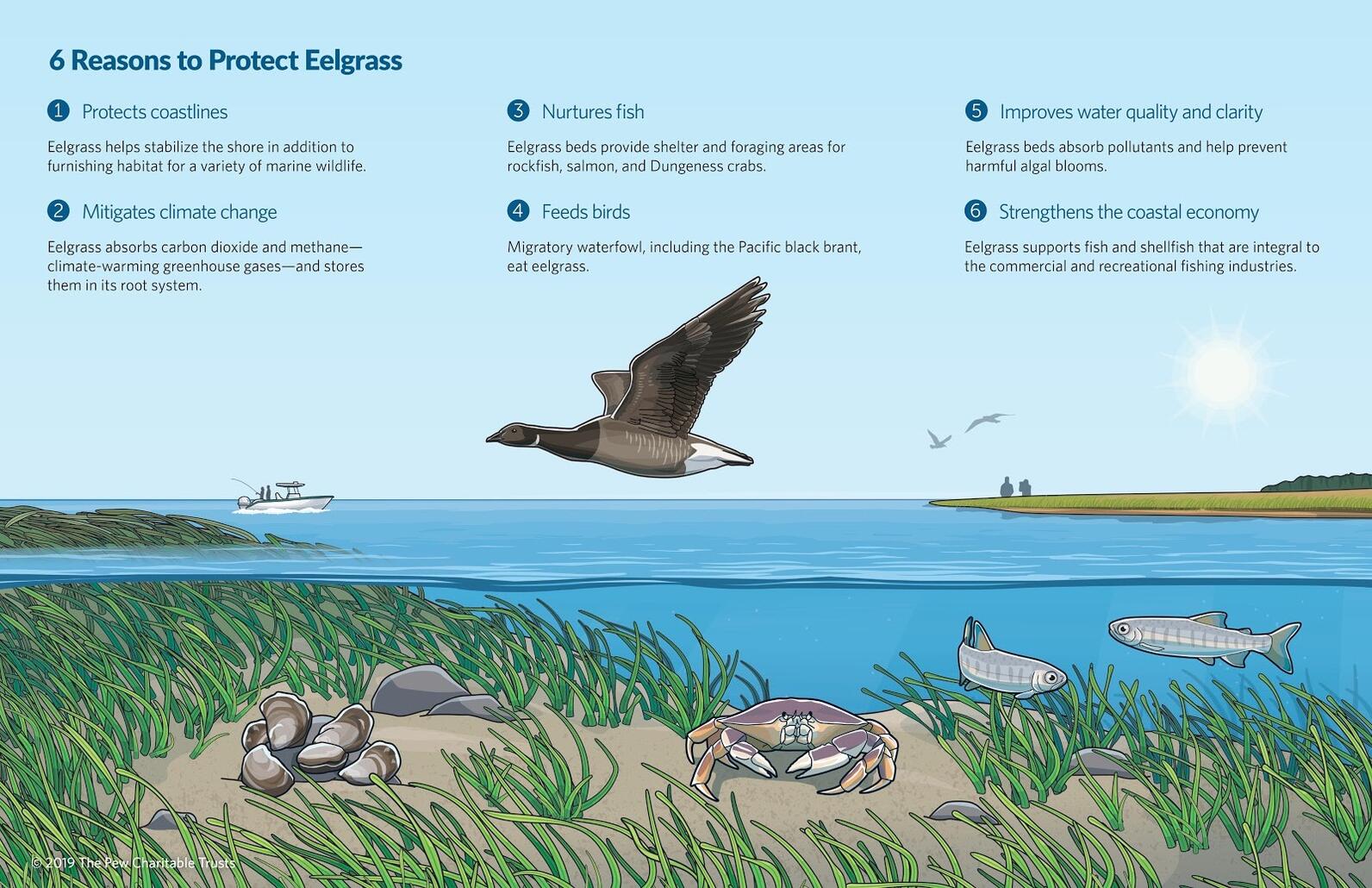Today, we applaud the group of scientists who have published an important study that provides a strong case that seagrasses can buffer ocean acidification. The study found that eelgrass on the west coast (Zostera marina) alleviates low pH- or more acidic conditions- for up to 21 days. This means that areas where seagrasses grow are a refuge for marine life facing a more acidic ocean environment. In sum, seagrass beds will help marine life thrive until our planet becomes carbon-neutral and we are able to stop or substantially slow global climate change.
This is important because ocean acidification is one of the worst impacts of climate change on our coast and ocean. The ocean bathes organisms in a slightly basic milieu, but due to our carbon emissions, the ocean is already 25% more acidic than in pre-industrial times. Marine life uses carbonate, a combination of carbon and oxygen, from the water to build shells and skeletons. When CO2 enters the water, a chemical process takes place that adds hydrogen ions which in turn makes carbonate less available for animals to build shells and skeletons. With lower pH, shells and skeletons are harder to form and can dissolve.
The new study shows that in a seagrass bed, pH is higher and the shells of organisms can develop more normally. Why is this important for birds? As the press release states, “many birds visit seagrass meadows specifically to dine on what’s beneath their swaying blades of grass.” This includes herring and other fish, and small crustaceans and shellfish. All of these prey rely on smaller organisms that for shells or skeletons.
Eelgrass is found on the West Coast from Alaska through California. No matter where you live, chances are you and your family are benefiting from eelgrass. In addition to ameliorating ocean acidity, this beautiful plant provides dozens of ecosystem services and provides essential habitat for coastal birds. As a crucial nursery habitat for crabs, salmon, and other wildlife, eelgrass boosts the economies of our coastal communities through fisheries and tourism. Healthy eelgrass beds also clean and filter water, absorb climate-warming carbon, and act as natural buffers to protect the coastline during storms. Download our printable bilingual (Spanish and English) eelgrass fact sheet.

Pacific herring seek out eelgrass when spawning in coastal estuaries from Alaska through California, providing a rich and readily accessible food resource for dozens of marine and coastal birds including Black Brant, Surf and Black Scoter, Greater and Lesser Scaup, American Wigeon, pelicans, cormorants, and grebes. Herring spawns on eelgrass cause a wildlife feeding frenzy with birds, marine mammals, fish, and crabs gathering for the feast every year.
Unfortunately, seagrass is disappearing worldwide because of pollution, dredging, development, sea-level rise, and other human-caused impacts. Approximately 30 percent of the world’s seagrass has vanished since the 1870s. Globally, we’re now losing two football fields’ worth of eelgrass every hour.
Fortunately, seagrass is responsive to conservation and restoration. Audubon is working in California and around the country to reverse seagrass declines through staving off destructive development, state and federal policy changes, and direct restoration and monitoring. Please join us in helping to protect this remarkable marine habitat!



